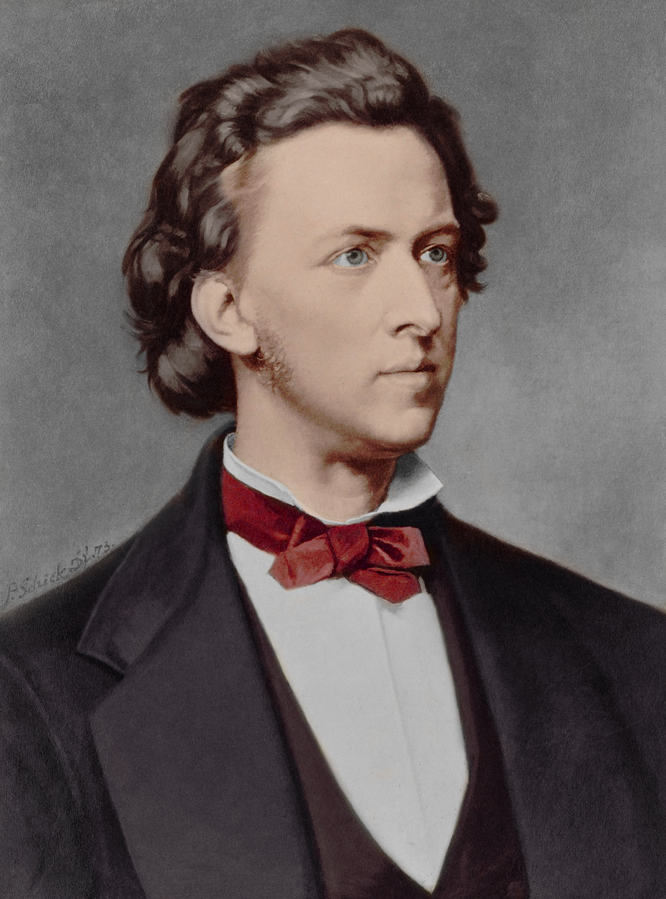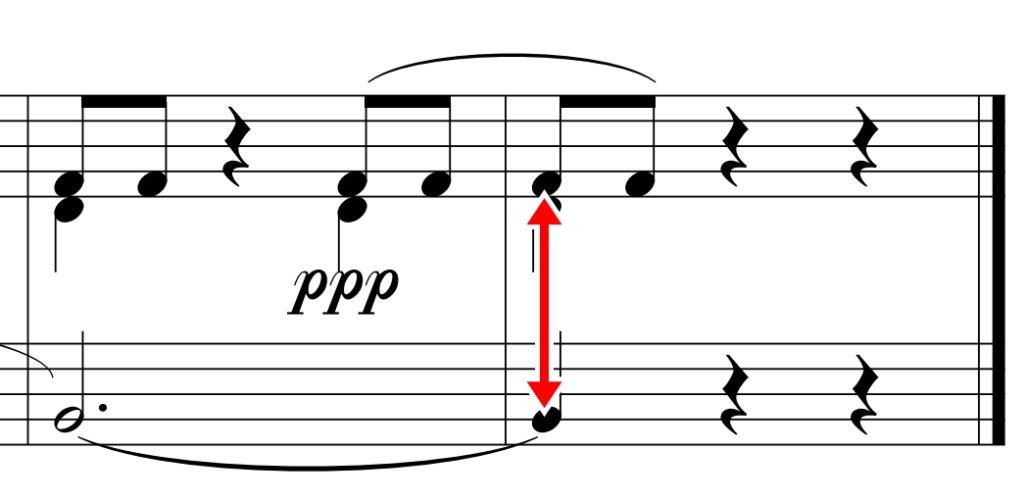Introduction
Compositions that have a small shape such as the Preludes of F. Chopin are comparable to the small stylistic structures of literature: the story is an example of form that concentrates in a very synthetic way all the dynamics of the narrative and allows us to make a faster analysis of what are the mechanisms of the style of the composition: a correct analysis gives us a broad overview of the piece, and allows us to read it starting from a broader glance.
Practical Analysis: Prelude Op. 28 No. 6 (F. Chopin)

Let's examine a seemingly very simple prelude from the collection of F. Chopin: the number 6 from op. 28. To analyze it, we must use a very specific yardstick: for this article, assuming that the general definition of a prelude can now be found everywhere online, we will try to say something new using the procedure of Jan La Rue; we will explore the so-called S scheme.H.M.R.G., a complex acronym that stands for the five characteristics that according to Jan La Rue's model should be looked at in a song: Sound, Harmony, Melody, Rhythm and Growth. Easy to translate the terms into Italian: sound, harmony, melody, rhythm, growth ratio. Since in Music it can even be harmful to remain to theory alone, we begin to explore this innovative analytical process starting from the practical example of the Prelude Op. 28 No. 6 by F. Chopin. You can download it for free below or buy a hard copy from the banner below: if you do it through that banner, a small part of your purchase will go to support this blog.
The Sound
Let's start with the sound and its characteristic features: one of these is the so-called texture, that is, how the sounds are placed in the acoustic space. If for harmony, melody and rhythm we commonly know what questions to ask ourselves, because commonly they are mentioned and already studied in depth, for the sound, a rather neglected element in the analysis, it may not be so. Below I have drawn up a table with some questions you could ask yourself to define the sound of a song through the analysis of its texture:
| QUESTION | POSSIBLE ANSWER |
| Are you alluding to a writing pattern? | Choral, Accompanied Melody, Imitative Counterpoint … |
| Do you allude to chamber instrumental configurations? | Trio, Quartet… |
| Are you alluding to particular instrumental idioms? | Cello, Timpano, Canto… |
| Are you alluding to a typified instrumental idiom? | Piano Idiom, Violinist… |
| How does the song behave vertically? | It remains in the space of an octave, starts within the octave but ends on a twelfth… |
| How does the song behave horizontally? | There are rhythmic signs of thickening, of rarefaction… |
There would be many more questions to ask, but the table would become too long. Let us now dwell on these first ideas: if you look closely at the beginning of the piece, it is all focused on a space of two octaves. The left hand arpeggia this ascending song that stabilizes on a chord of B minor. The field of action is two octaves. At a certain point the field of action opens considerably at bar 13, the C grave and the C on the upper pentagram have a space of three octaves: the texture passes from only two central octaves to three octaves that compared to the initial texture open towards the grave. There is a sinking from the severe set initially. After that there is suddenly a narrowing and even if we remain for some time in the field of the two octaves the piece closes in a space of twelfth.

We understood in other words how the sound through the texture is produced by the behavior of the sound fabric: summarizing all the considerations made in these first lines, in this Prelude of F. Chopin we have a movement that starts quite compact, expands in its center, recompacts and then closes almost extinguishing. This is one of the essential mechanisms of the sound in this song. But we still answered too few questions to define the sound of the song in its entirety.
The Instrumental Idiom in Sound
From the point of view of sound another essential characterization, as we have seen in the table above, is that of the idiom: in music there is an idiomatic sound, that is, there is a particular gesture of the flute that is typical of this instrument, there is a particular gesture of the piano that is typical of the piano and so on. In our Prelude it happens that contrary to the canonical piano idiom, which provides for a serious accompaniment under one or more acute melodies, we find an inversion because there is a rebutted chord of reference and the singing is all given to the middle and medium-grave register. The idiom is therefore that of the cello. This sort of mimesis where the piano imitates another instrument is very common in piano practice. The piano has gone down in history as a very important instrument because it can potentially imitate the rest of the orchestra.
Harmony
From the point of view of Harmony there are some characteristic things: we are in B minor, we see that the song is realized in B minor and this chord is very reiterated. When we arrive at bar 13, from the third line, from bar 9, we go to the VI degree of B minor, sol si re, then we make a change I-VI, a coloristic harmonic passage because there is no tension harmony, there is no real tensile ratio between the first and the sixth.

Rather it fades from one color to another often similar color. This change, this makes natural, changes the connotation of this harmony that is no longer a VI of B minor but with the presence of the natural F becomes a seventh of dominant of C major: and in fact the chord of C major will arrive immediately after. Suddenly with a simple natural fa we find ourselves in a harmony very far from B minor, C major, which is justified as the Neapolitan sixth of B minor, then a harmony of subdominant, which is noticeable because after the C major chord we go towards the diminished seventh remaining in the field of tonality (B minor). But what is certain is that at that moment a new harmony opens up, from B minor to C major.
The Melody
Beat 13 is significant from a melodic point of view: first we have a long arc, an initial surge and a slow decay, a pattern that is repeated for a long time along the song and that just at bar 13 breaks.

The Rhythm
From the rhythmic point of view, if we do not limit the same to the sole analysis of the values of the durations of the sounds, there are some very interesting aspects: meanwhile the first four bars weave a harmonic rhythm that provides a single harmony on four bars. By harmonic rhythm, as you will have understood, we mean the scanning of harmony changes.

Instead later in the song the harmonic rhythm becomes more concentrated, in other words the harmonies change more frequently. From the rhythmic point of view we hear great bars in 6/4, with an accent every two bars: a rhythmic trend characteristic of the beginning of the Prelude and that at bar 13 again breaks into a hemiolia (it is called so the transition from a ternary accent to a binary one).
Il Growth
To define growth, another rather neglected element together with the sound, we can draw up a second table of essential questions (to which are added many others, exposed by La Rue):
| QUESTION | POSSIBLE ANSWER | |
| Are there forms of material processing within a section and between sections? | Elaborations of the Sound and therefore of the texture, elaborations of a contrapuntal nature, elaborations of a timbre, dynamic, rhythmic, metric type… | |
| Are there relationships of continuity between one party and another? | Similarity, analogy, continuation… | |
| Are there relationships of discontinuity between one side and another? | Difference, contrast… |
For example, taking into consideration the first question of the table, in the Prelude of F. Chopin that we are analyzing we start from a rhythmically very static situation that gradually goes agitated up to bar 13 with the point of maximum expansion of the sound that is consumed and extinguished gradually.
Conclusions
La Rue says that we must select the most interesting aspects, those that seem significant to us to found a complex and rich analysis: the purpose of this work will be to allow us to identify the characteristics that make a song unique compared to many others. In other words, if we say that something happens in the sound, in harmony something else, in growth something else still in the end we have to make a synthesis: La Rue would say that bar 13 is the point of maximum convergence between the compositional elements, and that therefore this piece by Chopin is unique, authentic unrepeatable from the compositional point of view because the convergences of factors related to the culminating point of bar 13 are realized within it. There is therefore no need for elements that taken individually can be considered commonly valid according to it is not well known which rules and conventions decided at the table, but also for unique convergences that return the meaning of the uniqueness of a composition. These are the concepts of stylistic analysis that follows a very methodological approach, but that looks at a completely creative and enhancing goal. Do not miss the next articles, where we will analyze new songs according to the method of La Rue. See you next time!
- History Of The Piano – The Fortepiano - July 12, 2022
- Curt Sachs – History Of Organology At a Glance - July 8, 2022
- Giuseppe Verdi – Rigoletto, Il Trovatore, La Traviata - June 29, 2022
